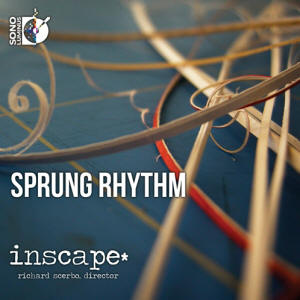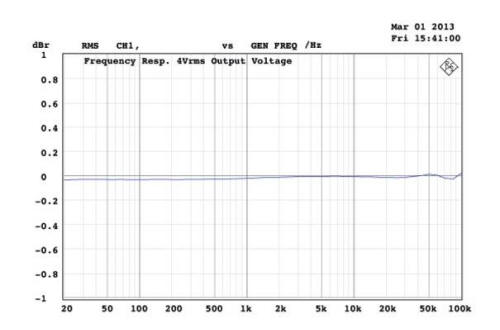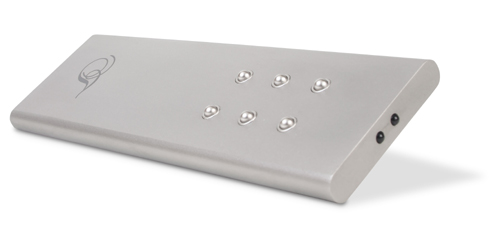|
|
You are reading the older HTML site
Positive Feedback ISSUE 70
trinity Preamplifier - Outstanding Fidelity as reviewed by Marshall Nack
Silence Is Not Emptiness In the summer of 1952, a pianist walked on stage, stopwatch and score in hand, sat down on the bench, and proceeded…to do nothing. For the next 4 minutes and 33 seconds, the audience only heard ambient sounds. The "performance" of John Cage's "4'33" " is considered to have had a huge influence on subsequent generations of composers. When asked about the piece later, Cage's pithy retort was, "There is no such thing as empty space or empty time. There is always something to see, something to hear." May I propose a question to you: Would you pay money to see this performed?
Enter the Trinity Preamplifier These reflections were prompted by the introduction of the Trinity Preamp into the reference system, specifically the way the Trinity develops a sound space. Let's listen to a recent release of contemporary composers performed by the youthful Inscape chamber orchestra on Sprung Rhythm (Sonos Luminos DSL-92170). I'm indebted to Roger S. Gordon's article for turning me on to this great, new audiophile record label.
You hear soft shakes of the jingle bells at the opening of Track 6. They appear instantly and fill part of the empty stage. The sounds float out and each is fully formed as soon as it speaks—it doesn't need time to develop or bloom. It grows in volume and displaces some of the room's atmosphere. And then it's gone and there's empty space again—but not nothing. What the perceptive listener picks up on is an almost subliminal quality in the silence. While the instruments have stopped playing, it is not a null space; it is not empty, like a vacuum. The musicians are still on the stage and human beings are never a void. They move; they breathe; they have a presence. This silence is different from the inter-track dead spots. More than a few of my panelists claimed to hear (or sense) this kind of human presence in silence with the Trinity Preamp in line. I think I hear it. Is it possible the Trinity is passing these nearly subliminal cues?
It's like sitting on the couch next to a friend when nobody's talking. You pick up on a "friendly" silence. As opposed to being next to a person whose very presence makes you anxious, who sucks all the air out of the room. In both cases, something is being communicated wordlessly—the silence contains content that is communicated. Another example is the expectant hush which pervades the hall in the moments before a concert begins. The palpable excitement is communicated. Then there's the audiophile notion of something called "deep black space" that is associated with digital playback. From the beginning, digital's ability to create these "deep black spaces" was applauded by everyone in the audiophile community. This was thought to result from plunging noise levels: digital was the harbinger of a novel virtue. Well, almost everyone. After getting used to it, some of us complained that the absence communicated content that seemed unnatural; it was the work of the devil. Oddly, analog never presents silence this way. Maybe it's the ever-present groove noise? It may be unusual to begin a review with such an arcane discussion, but it actually transpired in my listening room. The concept is interesting and unusual; I felt compelled to share it. Dynamics Moving on to the review proper, two things must be discussed. First, let's talk about dynamics. The Trinity's dynamic range is a shocker—macros simply pop off the charts. This preamp goes to whatever level is required—and often beyond—and sustaining those peaks presents no challenge. It is so expansive, it has me puzzled. Where the heck does that power reserve originate in its slim-line, smallish profile? It only weighs 18 lbs. and there's no outboard power supply. The Trinity has a ton of energy and is extremely lively. At the same time, don't expect it to "knock your socks off" or induce other testosterone-tainted experiences. It is too sophisticated for that. On the other hand, micros don't startle or push the envelope like the big swings. They fall in line with the Trinity's overall excellent grades and are not particularly noticed. What is this thing called Grip The second thing to talk about is grip. Over the years, I've had many audio discussions about this or that product possessing a quality described as grip. It always infers high praise—but what is it? I've yet to hit upon a satisfying definition. Better to define by example, as we know it when we hear it. Most audiophiles would agree that the MBL Reference Line amps have excellent grip, referring to their handling of the low frequencies. What sets them apart is, for all their power that outsized slam and terrific punch never becomes a runaway event. You never hear out-of-control bass booms and y ou know the speakers ain't going to do anything without getting the amps permission first. They are slaves to the will of the amps. The listener recognizes the amps' out-sized, controlled low-end power and is prompted to say, "Man, that amp sure has grip!" First Impressions Now I need to introduce a musical example to illustrate the Trinity's grip. Let's listen to Karl Goldmark's Rustic Wedding Symphony (Symphony No. 2), a new SACD (BIS- 1842). The reference system for this review was updated to include the Metronome Calypso transport and C8 Ref DAC and the amazing HB PowerSlave Acrylic power distributor (review coming soon).
Zap! I was instantly struck by the texture of the soundstage. These days, we expect the better class of preamps to produce realistically sized images with height, depth and width. Reference Class components should allow you to "see" the images and the stuff they are made of. It varies. Most of the time, the composition of images is heterogeneous. The center may be firm and in focus, but the outside is vague and nebulous. This gives the impression the component has the center under control but isn't handling the outside as well—and this is how it sounds. Many times it's the other way around; the outside is sharp and defined and the inside isn't. All of the sound is on the edges, on the periphery of the image. This gives the impression of a hole in the middle. The center of the note is missing and it sounds hollow. The Trinity allows this level of insight—and what I saw there was extraordinary. The entire span of the image from outer edge through its core and out to the opposite edge was of homogeneous texture. The Trinity clearly revealed what the image was made of and it was the same stuff throughout. Furthermore, it didn't matter if it was a bass or treble instrument, this treatment applied across the board. Wow! This tells me the Trinity has that grip thing in spades: it covers all frequencies and every inch of the image. And that is the big difference between it and the MBL. Even though t he Trinity has an excellent low-end, it won't be known for the MBL kind of slam. But the MBL only has this thing called grip over the low frequencies; its handling of the mids and treble is very good, but not at the same level. The Trinity has it across the board. In all my years in the game I might have heard this once before when I had in the Soulution 720 Preamp. It has been too long to state that with 100% certainty. Obviously, the aim is to do it the way the Trinity does. How does the Trinity get away with it? It must have occurred to you that a component with these qualities stands naked before the listener. Everything is exposed.
Caption: Frequency Response Curve If there are issues, I don't hear them. Can it be that the Trinity doesn't have any? Looking at its frequency response, the treble doesn't have a nasty edge, so it doesn't have to be rounded. The bass is not loose, so it doesn't run amuck, out of control. The midrange is not flaccid, and body is good from top to bottom. There is no need to soften transients; they are instantaneous, but not abrupt or aggressive. The Trinity is up at the pinnacle of an exclusive group of components with virtually no artifacts. (At least none that I can detect at this time. Our understanding of these things tends to evolve over time.) Tubes or SS? Still, all of these superlatives would be for naught if the delivery was dry or sterile—it would just be irritating. The Trinity sidesteps this, as well. When you hear it, you won't think solid-state. It is, of course, but it has the tone, timbre and liquidity of tubes. It is one of the new generation of products that are voiced like hybrids, exhibiting the best characteristics of tubes and SS. To me, this blend of musical yet neutral approaches the ideal. If you are coming from a tube reference point, you might want to sex it up a bit with some tubey flavoring. You may want to add pleasing second-order harmonics and round the musical line some more by adding valves elsewhere in the system. This is a matter of taste. The only area that speaks like solid-state is the Trinity's micro dynamics. That's no surprise: I've yet to meet the solid-state preamp that possesses the curvaceous inner life of tubes. Cosmetics & Build Quality Contemporary European best describes the Trinity's sleek, stripped-down, modernism. As mentioned earlier, it is slim-line with a low profile and lightweight. Front-panel controls are minimal: On/Off, Input Selection, Volume up/down and Polarity. The remote is surprisingly compact and comfortable in the hand with a heightened version of the same aesthetic. It has no labels, just six buttons offering Input Selection and Volume adjustment.
The high aesthetic at work leads you to expect exemplary build quality which the Trinity delivers. It actually approaches museum quality: both component and remote look like works of art. Installation The Trinity needs about a half hour to warm up and runs a bit warm. Best to leave it on all the time.
It comes with three sets of interchangeable ball bearing footers of dissimilar material. Use these to tweak the sound, if you want to experiment. I didn't feel the need—the sound I was getting didn't need tweaking. Avoid active power conditioning. However, it loved being plugged into the HB PowerSlave Acrylic, where it achieved the elevated performance described above. Technical Points
Caveat Emptor A couple of caveats are in order. It should be noted that only XLR is supported. There are four inputs and one output (a second output is optional at time of order).
There is no display on the unit, no volume readout: you can't tell where it's set. I had to get in the habit of always lowering the volume before switching source selection. Also, there is no mute control. Conclusion Trinity is an unfamiliar brand, but I have no doubt that situation will be remedied—in a hurry. The Trinity Preamp performs at the state of the art and pushes the envelope on several fronts. Dynamic range, for one, is outrageous; so good it makes you wonder, just where is this slim line, smallish chassis getting that kind of juice? Is there some new-fangled, possibly revolutionary, circuit, lurking inside? There are no sonic issues to report. Ergonomically, I'd like to see a few user-friendly features added, such as volume display, a mute button and support for single-ended inputs/outputs. The Trinity Preamp is definitely world-class, possibly the best I've heard, and, alas, priced accordingly. You've got to hear it! Marshall Nack
Trinity Preamp
Trinity Importer
Audioarts
|













